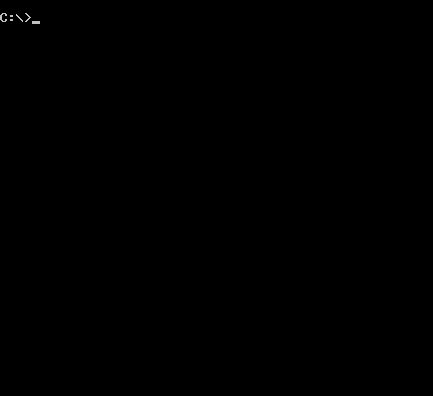Questa sfida, sebbene probabilmente banale nella maggior parte delle lingue "standard", è indirizzata a quelle lingue che sono così esoteriche, di basso livello e / o difficili da usare che si vedono molto raramente su questo sito. Dovrebbe fornire un problema interessante da risolvere, quindi questa è la tua occasione per provare quella strana lingua di cui hai letto!
L'obiettivo
Prendi due numeri naturali ae bcome input e genera altri due numeri: il risultato della divisione intera a/be il resto di tale divisione ( a%b).
Questo è code-golf : la risposta più breve (in byte), per ogni lingua, vince!
Input Output
- 0 <=
a<= 255, 1 <= b<= 255. Ognuno dei tuoi input (e anche output) si adatterà in un singolo byte.
- Puoi scegliere il formato che preferisci sia per l'input che per l'output, purché i due numeri siano chiaramente distinguibili (ad es. Nessuna stampa dei due risultati insieme senza un delimitatore)
Esempi
a,b->division,remainder
5,7->0,5
5,1->5,0
18,4->4,2
255,25->10,5
Nota: i builtin che restituiscono sia il risultato della divisione che il resto sono vietati . Almeno mostraci come la tua lingua gestisce l'applicazione di due funzioni agli stessi argomenti.
Nota 2: Come sempre, una spiegazione di come funziona il tuo codice è molto gradita, anche se ti sembra leggibile, potrebbe non essere così per qualcun altro!
Classifica
Ecco uno snippet di stack per generare una panoramica dei vincitori per lingua.
Per assicurarti che la tua risposta venga visualizzata, ti preghiamo di iniziare la risposta con un titolo, usando il seguente modello Markdown:
# Language Name, N bytes
dov'è Nla dimensione del tuo invio. Se si migliora il punteggio, è possibile mantenere i vecchi punteggi nel titolo, colpendoli. Per esempio:
# Ruby, <s>104</s> <s>101</s> 96 bytes
Se si desidera includere più numeri nell'intestazione (ad es. Perché il punteggio è la somma di due file o si desidera elencare separatamente le penalità del flag dell'interprete), assicurarsi che il punteggio effettivo sia l' ultimo numero nell'intestazione:
# Perl, 43 + 2 (-p flag) = 45 bytes
Puoi anche rendere il nome della lingua un collegamento che verrà quindi visualizzato nello snippet della classifica:
# [><>](http://esolangs.org/wiki/Fish), 121 bytes
var QUESTION_ID=114003,OVERRIDE_USER=62393;function answersUrl(e){return"https://api.stackexchange.com/2.2/questions/"+QUESTION_ID+"/answers?page="+e+"&pagesize=100&order=desc&sort=creation&site=codegolf&filter="+ANSWER_FILTER}function commentUrl(e,s){return"https://api.stackexchange.com/2.2/answers/"+s.join(";")+"/comments?page="+e+"&pagesize=100&order=desc&sort=creation&site=codegolf&filter="+COMMENT_FILTER}function getAnswers(){jQuery.ajax({url:answersUrl(answer_page++),method:"get",dataType:"jsonp",crossDomain:!0,success:function(e){answers.push.apply(answers,e.items),answers_hash=[],answer_ids=[],e.items.forEach(function(e){e.comments=[];var s=+e.share_link.match(/\d+/);answer_ids.push(s),answers_hash[s]=e}),e.has_more||(more_answers=!1),comment_page=1,getComments()}})}function getComments(){jQuery.ajax({url:commentUrl(comment_page++,answer_ids),method:"get",dataType:"jsonp",crossDomain:!0,success:function(e){e.items.forEach(function(e){e.owner.user_id===OVERRIDE_USER&&answers_hash[e.post_id].comments.push(e)}),e.has_more?getComments():more_answers?getAnswers():process()}})}function getAuthorName(e){return e.owner.display_name}function process(){var e=[];answers.forEach(function(s){var r=s.body;s.comments.forEach(function(e){OVERRIDE_REG.test(e.body)&&(r="<h1>"+e.body.replace(OVERRIDE_REG,"")+"</h1>")});var a=r.match(SCORE_REG);a&&e.push({user:getAuthorName(s),size:+a[2],language:a[1],link:s.share_link})}),e.sort(function(e,s){var r=e.size,a=s.size;return r-a});var s={};e.forEach(function(e){var o=e.language;/<a/.test(o)&&(o=jQuery(o).text().toLowerCase()),s[o]=s[o]||{lang:e.language,user:e.user,size:e.size,link:e.link,uniq:o}});var t=[];for(var o in s)s.hasOwnProperty(o)&&t.push(s[o]);t.sort(function(e,s){return e.uniq>s.uniq?1:e.uniq<s.uniq?-1:0});for(var c=0;c<t.length;++c){var i=jQuery("#language-template").html(),o=t[c];i=i.replace("{{LANGUAGE}}",o.lang).replace("{{NAME}}",o.user).replace("{{SIZE}}",o.size).replace("{{LINK}}",o.link),i=jQuery(i),jQuery("#languages").append(i)}}var ANSWER_FILTER="!t)IWYnsLAZle2tQ3KqrVveCRJfxcRLe",COMMENT_FILTER="!)Q2B_A2kjfAiU78X(md6BoYk",answers=[],answers_hash,answer_ids,answer_page=1,more_answers=!0,comment_page;getAnswers();var SCORE_REG=/<h\d>\s*([^\n,]*[^\s,]),.*?(\d+)(?=[^\n\d<>]*(?:<(?:s>[^\n<>]*<\/s>|[^\n<>]+>)[^\n\d<>]*)*<\/h\d>)/,OVERRIDE_REG=/^Override\s*header:\s*/i;
body{text-align:left!important}#language-list{padding:10px;width:290px;float:left}table thead{font-weight:700}table td{padding:5px}
<script src="https://ajax.googleapis.com/ajax/libs/jquery/2.1.1/jquery.min.js"></script> <link rel="stylesheet" type="text/css" href="//cdn.sstatic.net/codegolf/all.css?v=617d0685f6f3"> <div id="language-list"> <h2>Winners by Language</h2> <table class="language-list"> <thead> <tr><td>Language</td><td>User</td><td>Score</td></tr></thead> <tbody id="languages"> </tbody> </table> </div><table style="display: none"> <tbody id="language-template"> <tr><td>{{LANGUAGE}}</td><td>{{NAME}}</td><td><a href="{{LINK}}">{{SIZE}}</a></td></tr></tbody> </table>

a bprovidingb ainstead?